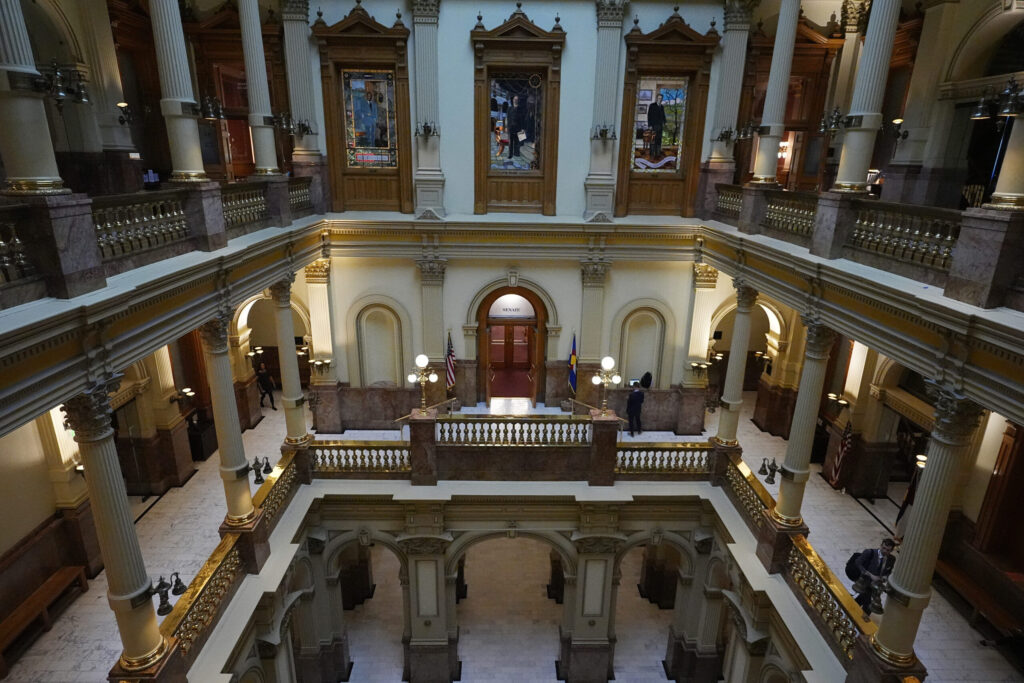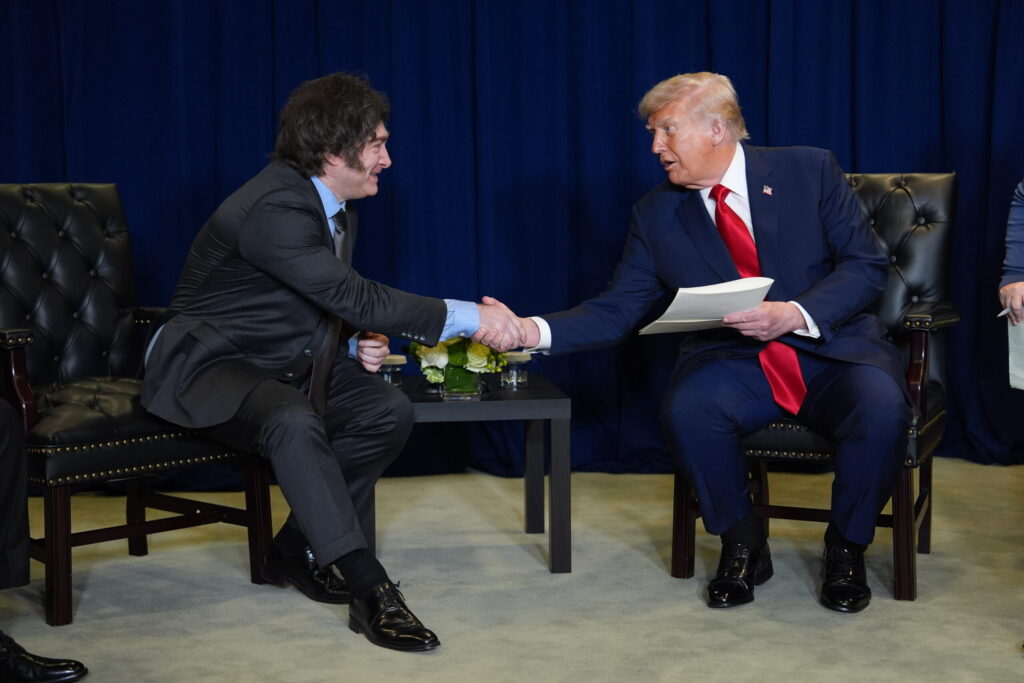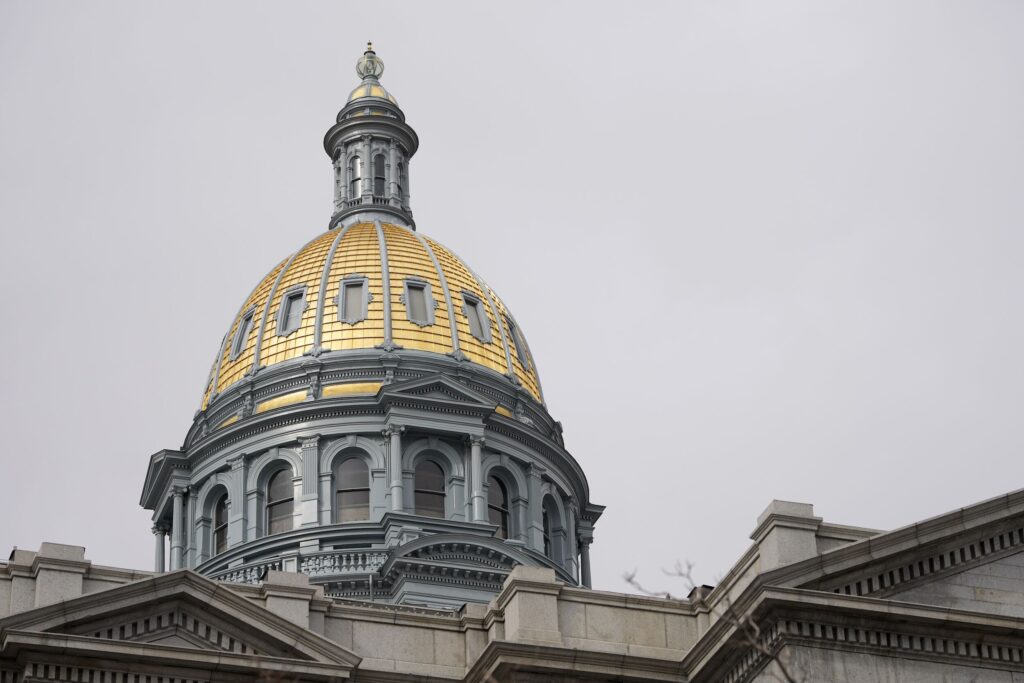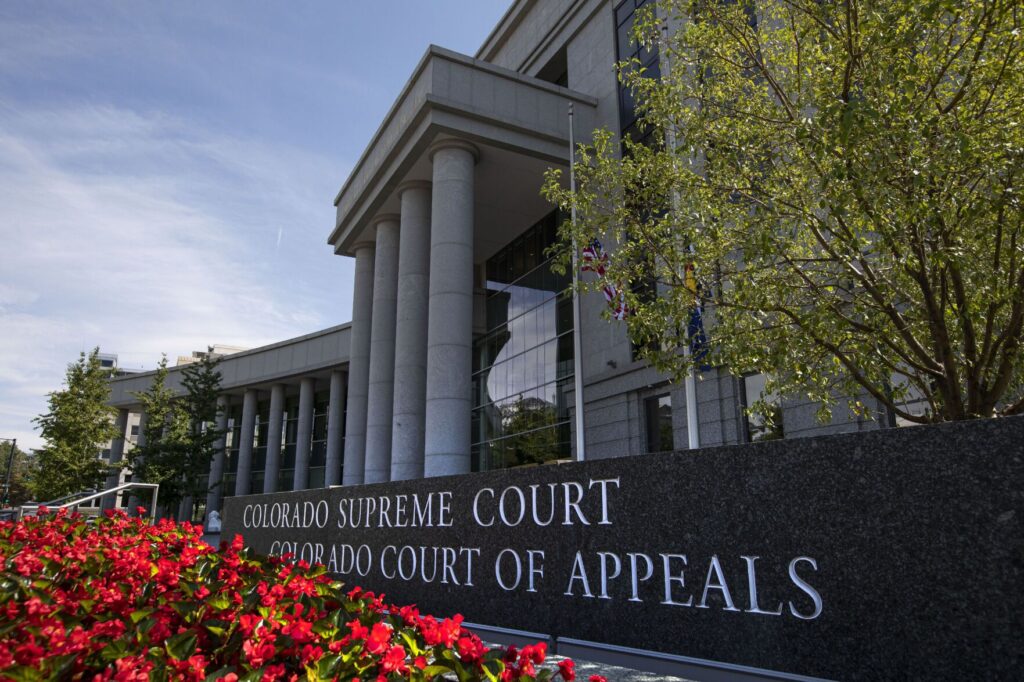Gov. Jared Polis announces $252.5 million in cuts to Colorado state budget
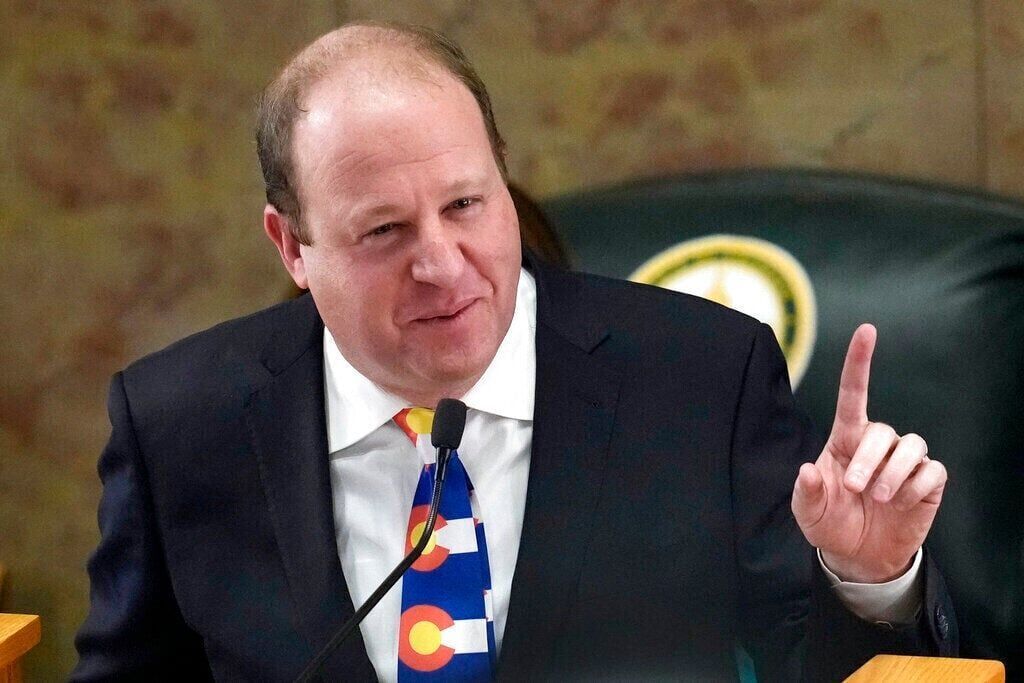
Gov. Jared Polis on Thursday signed an executive order, initiating the process to cut $252.5 million in cash and general funds from this year’s budget, with the most significant impact on the Department of Health Care Policy and Financing, which administers Medicaid.
Polis also signed into law a measure from the recently concluded special session that requires him to meet with the Joint Budget Committee to review the spending reduction plan.
That meeting was often tense, with the legislators who craft the state budget indicating they aren’t going along with some of his cuts, particularly for Medicaid providers.
Policymakers said the actions taken during the six-day special session, as well as the governor’s executive order, are intended to put the state’s budget back into balance. Democrats have insisted that the special session was necessary because of the fiscal gap that Congress created when it passed H.R. 1, resulting in losses of $1.2 billion in corporate and individual income tax revenue.
That, in turn, meant an $800 million shortfall in the state budget.
Republicans, on the other hand, insisted that the special session did little to nothing to fix the budget deficit, with some calling it “political theatre” aimed at blaming the GOP and the Trump administration for what they described as Colorado’s self-inflicted wounds. Republicans have long argued that the deficit is the result of Democrats failing to heed warnings of a looming deficit and following years of overspending.
Colorado carried a little surplus that the state government could apply, which reduced the shortfall to around $783 million, along with a small amount of new tax revenue from the federal budget.
Policymakers seek to shore up the state budget through a combination of three approaches.
The first is by generating $253.2 million in corporate tax revenue that could result from the measures adopted in the recently-concluded special session, the most significant portion of which deals with the sale of tax credits to C corporations. Democrats hope to raise approximately $100 million from that pot.
On Thursday, Polis said he believes those sales would be fully realized.
The second is to tap the state’s general fund reserve, which is set at 15% of the general fund’s spending, amounting to about $2.3 billion. Lawmakers from both sides of the aisle and the Polis administration have been hesitant to tap more than about 2% of those reserves — between $315 million and $328 million.
By law, those dollars must be restored in the next budget year, unless lawmakers decide to reduce the reserve.
Both Polis and Mark Ferrandino, the director of the governor’s Office of State Planning and Budgeting, have said taking more than 2% would be fiscally irresponsible, as state economists have predicted a 50% chance of a recession in the next two years.
The third approach deals with state agency budget cuts, most which take will effect on Sept. 1, although some of the cuts to provider rates don’t go into effect until October, with some not until January.
The cuts originate from three areas: a hiring freeze imposed by the governor on Aug. 27, general fund cuts to state agency budgets, and cash funds transfers to the general fund.
While eight state agencies are facing budget cuts, the largest reductions will occur at the Department of Health Care Policy and Financing and the Department of Higher Education.
Those cuts rankled members of the Joint Budget Committee the most.
The Department of Health Care Policy and Financing will see $79.3 million in cuts through eight different programs, including in children’s health, treatment services, reproductive health for individuals illegally staying in the U.S., adult dental, behavioral health and adult comprehensive services. At least half of those cuts will affect provider rates.
The presentation to the JBC showed the governor is reversing the 1.6% increase in provider rates approved in the 2025-26 budget. That will save the state about $38.3 million in general funds.
Provider rates have been a bone of contention between the governor and the Joint Budget Committee. In last November’s budget submission, Polis suggested about $68 million in cuts, which included reductions in provider rates, that the JBC did not adopt. The legislature has worked to increase provider rates over the last several years.
Department of Higher Education will see $12.7 million in cuts, largely applying to the fee-for-service funding. Ferrandino explained that colleges and universities got a $22 million increase in their funding for 2025-26 — and about $9 million of the cuts are from that increase. He noted that the governor did not recommend such a high increase, and that’s also part of the $68 million in cuts the governor suggested from November.
Another $146 million will come from cash funds. That includes $105 million from the state’s Affordable Housing Support Fund, paid for with one-tenth of 1% of state income taxes and approved by voters through Proposition 123 in 2022. The measure contained a caveat that said in years when state revenue is below the Taxpayer’s Bill of Rights limit, the amount available for the program might be reduced to help the state budget.
Under those circumstances — and Polis insisted H.R. 1, the budget Congress adopted, put the state below the TABOR limit — the state legislature can reduce part of the new funding to the affordable housing programs to balance the state budget.
However, Polis said the funds being transferred from Proposition 123 are those that would go to the Office of Economic and International Trade (OEDIT), not the money sent to the Department of Local Affairs. The ballot measure stated that approximately 60% of the Proposition 123 funds would be allocated to OEDIT.
The rest of the cash funds that make up the $146 million include the CollegeInvest administration fund ($9.2 million), several severance tax funds, a school and child care clean water drinking fund ($4 million), a disability support fund ($5 million), and a mobile home water quality fund ($3 million).
Those cash fund transfers will be part of the supplemental budget adjustments in the 2026 legislative session, as will all the other cuts announced on Thursday.
“I do not take these actions lightly,” Polis said in his signing statement, “but the budget deficit created by H.R. 1 requires us to make hard choices.”
Lawmakers balk at cuts to provider rates
The governor emphasized that the budget cuts he outlined will not affect public education or public safety.
“Our goal was to cause the least harm, the least damage,” he told the Joint Budget Committee.
Republicans have theorized that Polis called the special session as a publicity stunt — to blame the Trump administration for Colorado’s budget woes.
“I don’t feel like a lot got accomplished,” said Sen. Lisa Frizell. “We didn’t address the structural deficit. We have grown (the state) government irresponsibly. There is just no appetite for (Democrats) to cut state employees and spending.”
In any case, JBC members were clearly not comfortable with the governor’s decisions.
Sen. Barbara Kirkmeyer, R-Brighton, the JBC’s ranking Republican, asked the governor why he chose to cut provider rates, which will result in loss of federal matching dollars — and, she said, the healthcare that goes with them.
The governor said he doesn’t see it as cutting healthcare, but as delivering the cuts contained in H.R. 1.
“This is just the tip of the iceberg,” Polis said, noting next year’s budget will deal with increased state costs for Medicaid.
JBC Chair Sen. Jeff Bridges, D-Greenwood Village, asked if Polis would recommend increased provider rates in his next budget. Polis replied that he is hopeful.
Sen. Judy Amabile, D-Boulder, said she is worried about how the cuts will impact the population of people with mental illness. She sought assurances that the governor would take that into consideration for his next budget proposal.
Lawmakers don’t have any “say” right now in how the governor cuts the budget. They will have the opportunity to have their “say” when the legislature returns in January and the JBC begins the process of reviewing adjustments to the budget, although in 2026 that’s likely to mean more cutting than spending.
Polis acknowledged that, saying if there are different cuts legislators want to make, they can do so and he’s open to it.
The governor said he had to act early because it makes balancing the budget easier than making severe cuts later.
JBC Vice-Chair Rep. Shannon Bird, D-Westminster, raised worries about the higher education cuts. She said colleges and universities have already set tuitions rates and budgets.
“These would be hard cuts to absorb midstream given that the semester’s already started,” she said.
Ferrandino pointed out that the $9 million cut to higher education just reduced the increase they got in the 2025-26 budget, a total of about $22 million. He also explained the trade-offs, saying the more things are exempted, the greater the cuts would need to be.
If they left out higher education from the cuts, there would be bigger cuts to provider rates, he said.
Rep. Emily Sirota, D-Denver, noted the cuts to a mobile home water fund. Ferrandino said the cut to that program, about $3 million, is far below what it needs. The same applies to a $4 million cut to a clean water program for schools and child care — their appropriation is sufficient to cover what they need to do, he said.
Both are part of the sweeps of cash funds that will go to the general fund to cover the shortfall.
The total budget cuts to the eight state agencies represent about 0.66% of their total appropriations.
The K-12 education community showed relief that it had been left out of the cuts.
“We want to thank Colorado legislators and the governor for prioritizing our students and communities during this special session by protecting education funding,” said Kevin Vick, president of the Colorado Education Association, the state’s largest teachers union. “Schools are already stretched thin. This commitment from our lawmakers helps ensure that students continue to have the resources they need to learn and thrive, and that educators can stay focused on what matters most, supporting every child in every classroom.”
In a statement to Colorado Politics, Kirkmeyer said checks and balance in government does not mean the governor gets to write the check and then balance the budget on the backs of the poorest.
“It’s deeply disappointing” that the governor chose anew to cut Medicaid and harm both patients and providers, she said.
“These unilateral cuts will make it harder for families to access care and for doctors, hospitals and clinics to keep their doors open,” she said.
She also said the cuts will cost Colorado millions in matching federal dollars, and that the governor will make the budget crisis worse, “leaving working families to pay the price.”
Editor’s note: The governor’s office claims the tax bills from the special session will bring in $245.2 million, instead of $253.2 million. The $245.2 million is what will go to the general fund to reduce the shortfall. The other $8 million is also revenue, and it’s included in the fiscal notes of those bills. But those dollars will go to the state education fund and a smaller percentage to the affordable housing fund. Both are required under voter-approved ballot measures that diverted a portion of state income tax revenue for those purposes.


